Scarborough Castle
OS grid reference:- TA 040 880
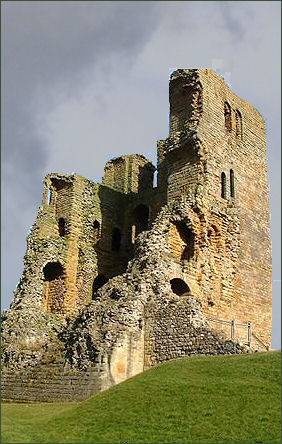
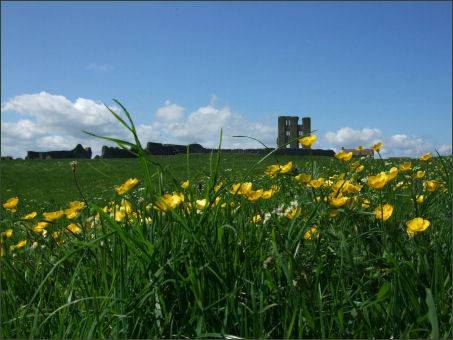 Scarborough Castle was built in the early twelfth century by the powerful Norman baron William le Gros, Count of Aumale and Holderness (died 20 August 1179) during the reign of King Stephen. the castle was constructed on land granted to le Gros in reward for his victory at the Battle of the Standard, when English forces repelled a Scottish invading army on 22 August 1138 on Cowton Moor near Northallerton.
Scarborough Castle was built in the early twelfth century by the powerful Norman baron William le Gros, Count of Aumale and Holderness (died 20 August 1179) during the reign of King Stephen. the castle was constructed on land granted to le Gros in reward for his victory at the Battle of the Standard, when English forces repelled a Scottish invading army on 22 August 1138 on Cowton Moor near Northallerton.
The castle stands dramatically high on a prominent rocky headland above the seaside town of Scarborough, with sheer drops to the sea and dominates the town and harbour some 300 feet below. Some information on the establishment of the castle has survived in the chronicle of William of Newburgh, a monk who in the 1190s who wrote about its foundation. The castle had a gate tower, curtain wall, dry moat and chapel. This motte and bailey castle subsequently disappeared, with only the small, raised mound of the motte visible in the inner bailey today.
Archaeological excavations in the 1920s provided evidence which suggests a hill fort once stood on the headland which the castle occupies. Finds were dated to the late Bronze Age/early Iron Age. Among the finds was a Bronze Age sword, thought to have been a ritual offering, which is now on display in the castle exhibition.
A Roman signal station, constructed in circa 307 AD and one of several on the Yorkshire coast, later occupied the headland, the remains of which can still be seen, it was used until the early fifth century. The signal station comprises a ditch, an inner wall with bastions, and a signal tower. The tower was 15 metres square at the foundations above which were four surviving courses, stepped back. Seven bases for wooden posts supporting floor beams were also discovered. The foundations suggested a tower nearly 30 metres high It was one of a chain along the East coast between the Tees and Flamborough Head set up to give warning of hostile approaches. The site has been recreated to reveal the ditch. Following the departure of the Romans, the Anglo-Saxons built a chapel on the station site around the year 1000, the remains of this structure are also still visible. This is reputed to have been destroyed during the invasion of Harald Hardrada in 1066.
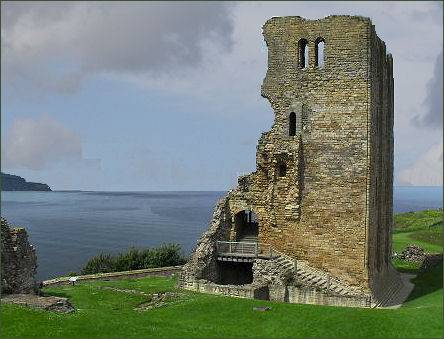 Scarborough Castle served as the northern base of Kings of England for almost five centuries. On succeeding to the English throne, the first Plantagenet king, Henry II, ordered that all castles built in the reign of his predecessor, King Stephen, be returned to the Crown.
Scarborough Castle served as the northern base of Kings of England for almost five centuries. On succeeding to the English throne, the first Plantagenet king, Henry II, ordered that all castles built in the reign of his predecessor, King Stephen, be returned to the Crown.
Henry II rebuilt the then timber castle in stone, most of the building work was undertaken in the decade 1159 to 1169, when the three-storey keep was constructed and a stone wall built to replace the former wooden palisade which protected the inner bailey. The castle became a strategic northern stronghold for The Crown. Henry granted the town of Scarborough, which had grown up around the fortress, the status of Royal Borough.
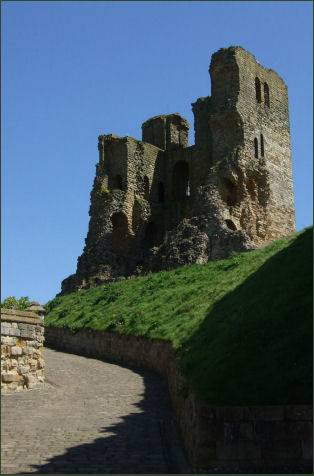 Henry II's youngest son, King John, visited the Scarborough Castle four times during his reign, and spent a considerable sum of money on improvements, ensuring that it was a comfortable residence for himself and his retinue. John's was a turbulent reign and he fortified Scarborough Castle as a strategic stronghold. Improvements continued under John's son Henry III (1216-1272). By this time, Scarborough had grown to become a thriving port, and though he never visited the castle, Henry spent considerable sums of money on its upkeep.
Henry II's youngest son, King John, visited the Scarborough Castle four times during his reign, and spent a considerable sum of money on improvements, ensuring that it was a comfortable residence for himself and his retinue. John's was a turbulent reign and he fortified Scarborough Castle as a strategic stronghold. Improvements continued under John's son Henry III (1216-1272). By this time, Scarborough had grown to become a thriving port, and though he never visited the castle, Henry spent considerable sums of money on its upkeep.
The barbican, consisting of two half-cylindrical towers on either side of a gateway was completed in the fourteenth century, although it has been much altered over the proceeding centuries. John's grandson, the future King Edward I (reigned 1272-1307), held court at the castle in 1275 and 1280. In 1295, hostages from his Welsh campaigns were held there.
King Edward II's favourite, Piers Gaveston, who was hated by the barons due to his influence over the king, sought sanctuary from his enemies at Scarborough Castle.
In April 1312, King Edward appointed Piers Gaveston as governor. In May of that year, the Earls of Pembroke and Warenne, along with Robert Clifford and Henry de Percy, besieged and captured the castle. Piers Gaveston was allowed safe passage and an escort from the castle, however, in the course of his journey south he was taken by Guy de Beauchamp, Earl of Warwick and executed.
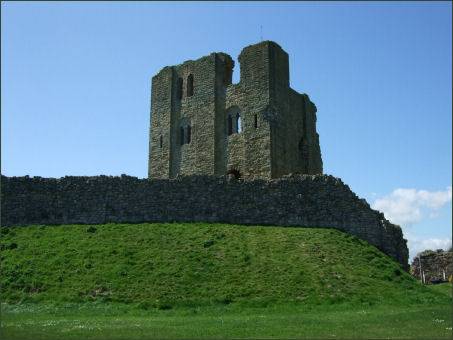 In the seventeenth century, George Fox (1624-1691), founder of the Society of Friends was imprisoned there from April 1665 to September 1666 during the reign of Charles II
In the seventeenth century, George Fox (1624-1691), founder of the Society of Friends was imprisoned there from April 1665 to September 1666 during the reign of Charles II
Scarborough Castle has suffered serious damage twice throughout its long history. During the Civil War (1642-1651), the Parliamentarian Sir Hugh Cholmley occupied the castle but switched his allegiance to the Royalsits in March 1643. On his orders the castle was refortified on Cholmley's orders, following his defection, the castle and its garrison of 700 soldiers, the town and its strategic supply port supported the cause of King Charles I.
Sir John Meldrum captured Scarborough from the Royalists on 18 February 1645, Cholmley refused to surrender the castle, after which the Parliamentarians besieged it. Parliamentarian forces set up the Cannon Royal. (then the largest cannon in the country), in the twelfth century St. Mary's Church below the castle and pounded the castle's defences. The church also suffered extensive damage in the fighting.
Scarborough Castle's keep was partly destroyed, although no breech occured in the outer walls. The shell of the keep survives today, minus its west wall, which was destroyed in the bombardment. Hand-to-hand fighting around the barbican gateway followed, in which Sir John Meldrum lost his life.
The castle was finally surrendered to the Parliamentarians on 25 July 1645 Cannon bombardment, scurvy, land a shortage of water and gunpowder and the threat of starvationall played a part in the Royalist defeat. In addition there were only 25 men fit to continue fighting. But half of the original 500 defenders emerged alive.
The castle was later repaired for Parliament. Matthew Boynton, the castle's new governor, declared for the king on 27 July 1648 and a second siege commenced which returned the Scarborough Castle to Parliamentary control on 19 December. The castle later served as a prison for those who were deemed to be enemies of the Commonwealth. The castle was returned to the Crown following the restoration of the monarchy under Charles II in 1660.
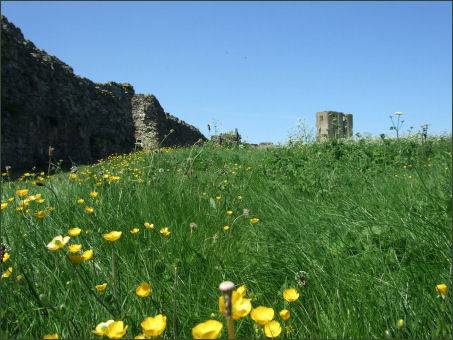
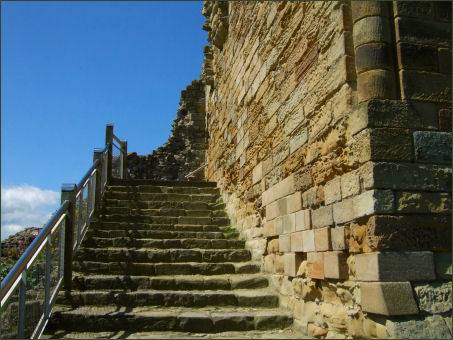
In 1914 the town and castle were attacked by German battle cruisers, resulting in demolition of much of the remaining structure.
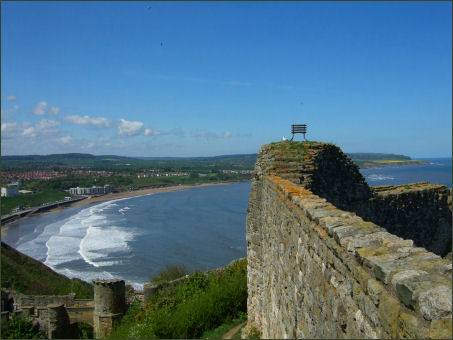
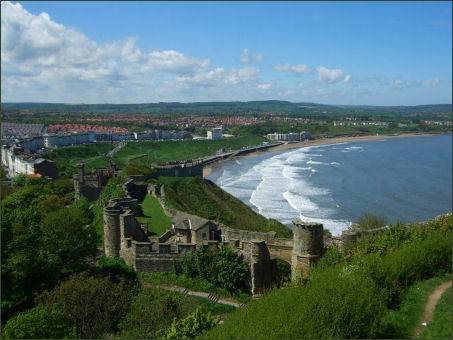
The castle site is now in the care of English Heritage
Images courtesy of Paul Johnson
Directions
Castle Road, east of the town centre.
Sat Nav -Postcode: YO11 1HY Latitude: 54.286894 Longitude: -0.392371
Parking -As there is no parking on site, we recommend use of the Park and Ride or the pay and display Marine Drive car park. Parking is only available for disabled visitors, which must be pre-booked. Please contact Scarborough Castle on 01723 372451 to book a space.
